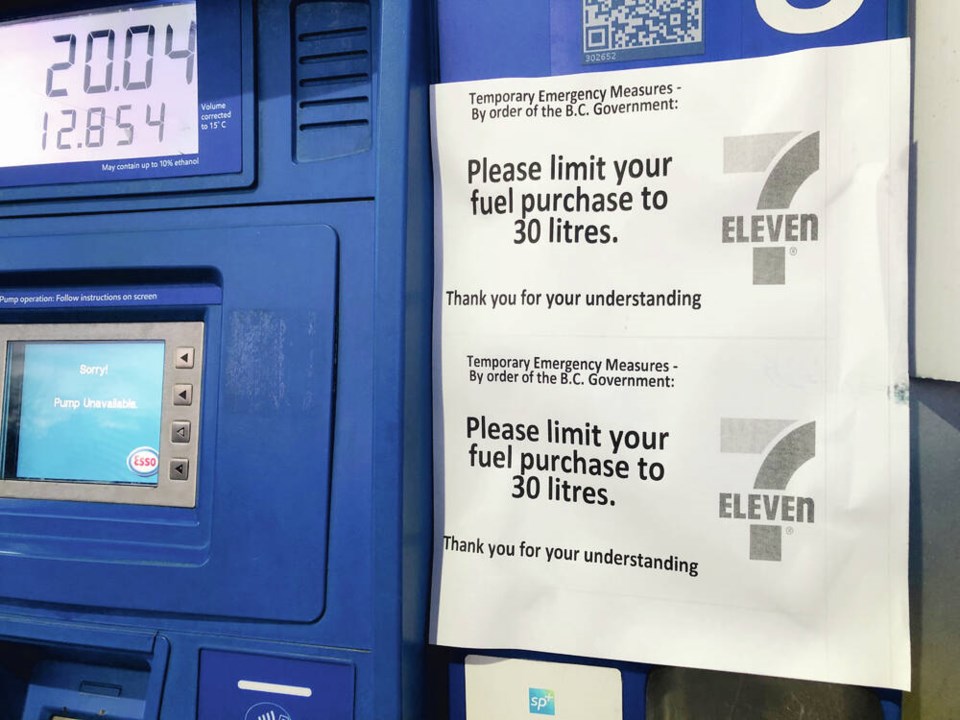The British Columbia government is lifting a restriction on gasoline sales that was put in place after flooding and landslides reduced supply.
Public Safety Minister Mike Farnworth said the 30-litre limit per visit to the pumps proved effective and will be lifted today.
Gas and diesel rationing took effect Nov. 19 for drivers on 91原创 Island, the Lower Mainland and other southern B.C. locations in order to ensure there was enough fuel for essential traffic, such as emergency vehicles and supply chain transport.
“We asked people to pull together and they did. We could have failed or we could have succeeded, and we succeeded because people did the right thing,” Farnworth said during a news briefing on flood recovery Monday.
He said with additional fuel still coming in by barge and rail, the government is confident in the supply chain.
The Trans Mountain pipeline delivers the majority of fuel to southern B.C. but was taken out of service for three weeks as a precaution when a series of storms lashed the area in November.
The pipeline resumed operations Dec. 5 at reduced pressure and Trans Mountain said it expected to return to normal capacity within a week.
Farnworth announced a two-week extension to the provincial state of emergency as crews continue work to reopen highways and while traffic on some major routes is limited to essential services.
The order restricts non-essential travel on Highway 3 from Hope to Princeton and on Highway 99 between Pemberton and Lillooet.
Transportation Minister Rob Fleming heralded the work of crews who have “defied the odds” in their progress on the Coquihalla Highway. The major arterial roadway may reopen even sooner than the early January date announced late last week, he said.
More than 20 sites along a 130-kilometre corridor were affected by mudslides and washouts. About 300 workers are using 200 pieces of heavy equipment around the clock, he said.
“The Coquihalla is alive with construction activity every waking hour,” Fleming said.
The highway was originally slated to reopen in late January after last month’s storm damage.
A full briefing is scheduled this week that will include details on the scope of repairs and a reopening timeline for commercial traffic on the Coquihalla, as well as details on when general traffic will be allowed on Highway 3, Fleming said. “I expect by Wednesday we’ll be able to give something a lot more precise.”



